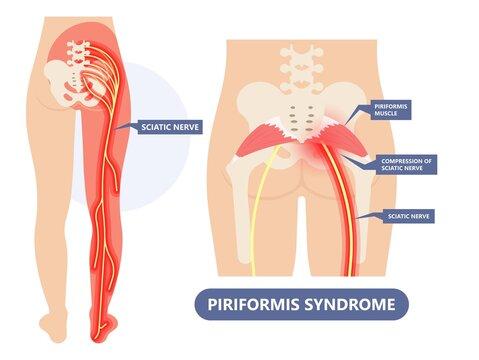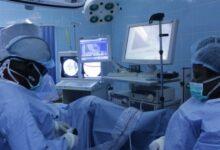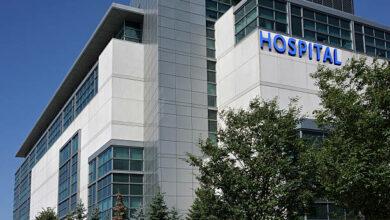
Top 15 Signs and Effect of Piriformis Syndrome
Top 15 Signs and Effect of Piriformis Syndrome – Piriformis syndrome is a condition caused by compression or irritation of the sciatic nerve by the piriformis muscle. The piriformis muscle is a small muscle located deep in the buttocks that assist with external rotation and abduction of the hip. When this muscle spasms, inflammation or swelling occurs, it can compress the sciatic nerve which can lead to pain, numbness and tingling along the path of the nerve down the back of the leg.Top 15 Signs and Effect of Piriformis Syndrome
Piriformis syndrome is often mistaken for more common back and leg pain conditions. But there are some key signs and symptoms that can help identify piriformis syndrome. Being aware of these signs can help get a proper diagnosis and treatment plan.
👉 Relocate to Canada Today!
Live, Study and Work in Canada. No Payment is Required! Hurry Now click here to Apply >> Immigrate to CanadaHere are the Top 15 Signs and Effects of Piriformis Syndrome:
1. Buttock Pain
One of the most distinguishing features of piriformis syndrome is pain in the buttock area. Patients often describe aching, burning or tightness deep in the buttocks. The pain is usually localized on the affected side, where the piriformis muscle is spasming and irritating the sciatic nerve.Information guide Nigeria
Read Also: Top 15 80s Synthpop Songs
2. Sciatic Nerve Pain
Piriformis syndrome causes pain along the path of the sciatic nerve which runs from the lower back, through the buttocks and down the back of the leg. Patients may feel sharp, shooting nerve pain starting in the buttocks and radiating down the back of the thigh, calf or foot.
3. Worse Pain with Sitting
Prolonged sitting usually aggravates the symptoms of piriformis syndrome. Sitting causes the buttocks to compress which can further irritate and compress the sciatic nerve. Patients typically get relief by standing up and changing positions.Romantic love message
4. Limited Range of Motion
The piriformis muscle assists with external rotation and abduction of the hip. When it is inflamed or in spasm, it can cause restricted range of motion of the hip joint. Patients may have trouble fully rotating the hip outward or bringing the leg out to the side.
Read Also: Top 15 Signs of Spinal Stenosis
5. Weakness or Numbness
The sciatic nerve innervates much of the lower leg. Piriformis syndrome can cause dulled sensation, pins-and-needles tingling or weakness in parts of the leg that receive signals from the compressed nerve. This usually occurs on just one side of the body.NYSC Portal
6. Pain with Climbing Stairs
Climbing stairs requires lifting and externally rotating the hips. This motion can further irritate the inflamed piriformis muscle and sciatic nerve which can worsen symptoms. Patients often report increased buttock and leg pain when climbing stairs.Good morning My Love Message
👉 Relocate to Canada Today!
Live, Study and Work in Canada. No Payment is Required! Hurry Now click here to Apply >> Immigrate to Canada7. Pain with Sports
Strenuous activities like running, jumping or squatting that involve hip flexion and rotation can aggravate piriformis syndrome. Athletes may develop piriformis syndrome or experience worsening of symptoms during sports due to repetitive hip motion and impact.
8. Pain with Getting Up
Moving from a seated to standing position requires rotation of the hip joint. This motion can pinch and irritate the sciatic nerve which can cause a spike in pain when getting up from sitting. Patients may use their hands to assist standing up to avoid hip rotation.JAMB portal
Read Also: 15 Best Home Remedies in Nigeria
9. Pain with Hip Flexion
Bringing the knee towards the chest requires contraction of the piriformis muscle and hip flexion. Patients with piriformis syndrome usually experience increased sciatic pain when pulling the knee to the chest or bending forward at the waist.
10. Relief from Stretching
Gentle stretching of the piriformis muscle can help provide relief from symptoms. Stretches that externally rotate the hip and take pressure off the piriformis muscle can temporarily reduce pain and increase range of motion.
11. Limping
The pain caused by piriformis syndrome may cause patients to limp when walking to avoid pinching the sciatic nerve. They often shift their weight away from the affected side which leads to an abnormal gait.
12. Swelling
Some patients develop localized swelling or inflammation around the piriformis muscle in the buttocks. There may be palpable tenderness and swelling over the piriformis muscle that corresponds with the site of pain.
Read Also: Top 15 Local NGOs in Nigeria
13. Sleep Disturbances
The pain of piriformis syndrome can make it difficult to sleep comfortably at night. Patients may have trouble falling asleep due to sciatic and buttock pain. Sleeping with a pillow between the knees can help take pressure off the piriformis muscle at night.
14. Cause of Injury
Piriformis syndrome sometimes follows a lower body injury that caused trauma to the piriformis muscle. Car accidents, falls on the tailbone and hip injuries can predispose patients to developing piriformis syndrome.
15. Risk Factors
There are several factors that can increase risk of developing piriformis syndrome including occupations that require repetitive squatting or climbing, leg length discrepancies, obesity, arthritis, muscle tightness and spinal abnormalities.
Read Also: Top 15 Best Practices for Mosquito Control
Conclusion
Piriformis syndrome is an often overlooked cause of sciatic nerve pain originating in the buttocks. Being aware of the characteristic symptoms like buttock pain, hip weakness, worsening pain with sitting and relief from stretching can help distinguish piriformis syndrome from other causes of back and leg pain. Seeking proper diagnosis and treatment from a physical therapist or doctor is important to relieve compression on the sciatic nerve and return to normal function.
Check JAMB RESULT
Check and Confirm: How much is Dollar to Naira








